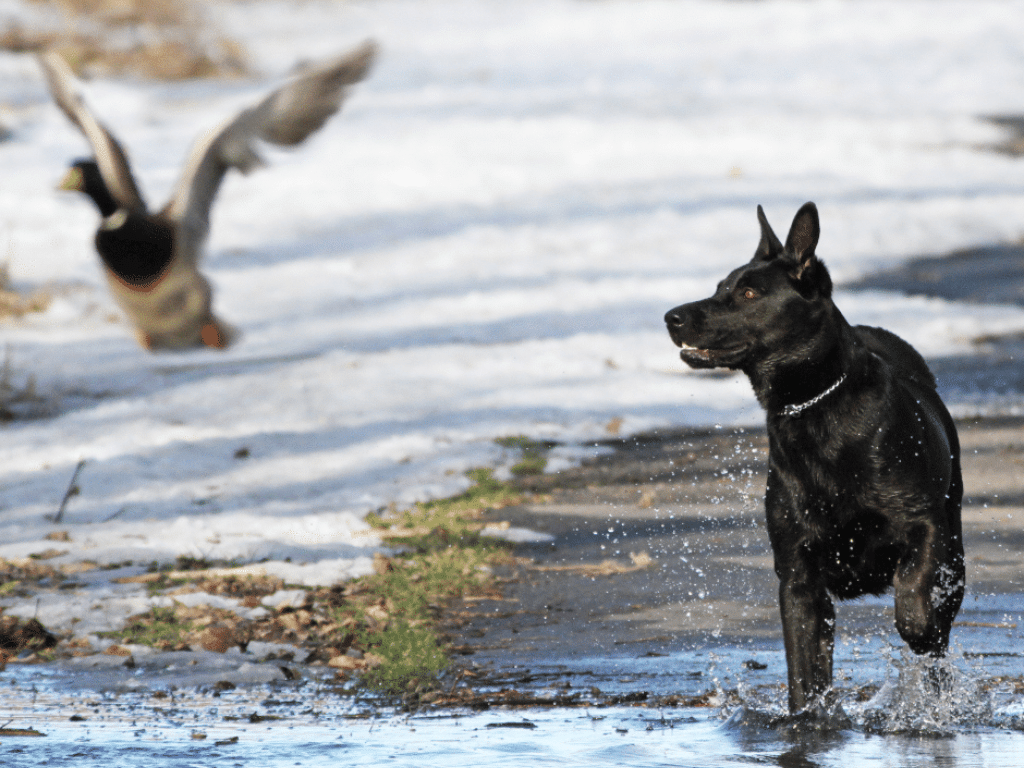For dog owners in Hamilton, recognizing and understanding self-rewarding behaviours is essential for effective communication and training. Learn more about our dog training programs designed to address these behaviours. These behaviours, which dogs engage in without any external prompt because they find them inherently satisfying, can greatly impact how your dog responds to training and behaves in everyday life. This guide will explore these behaviours in-depth, offer detailed examples to help you identify them, and suggest strategies to manage and integrate them effectively into your training regimen.
What are Self-Rewarding Behaviors?
Self-rewarding behaviours are actions that dogs perform autonomously because they provide inherent satisfaction. These behaviours fulfill natural instincts or needs without any intervention from the owner, such as treats, toys, or verbal praise. Understanding that these behaviours are rewarding for your dog on their own is crucial as it explains why dogs might prefer these activities over following a command, even when a reward is offered.
Examples of Self-Rewarding Behaviors
- Chasing Prey: Dogs descended from wolves, who are natural hunters. When your dog sees things moving (animals like a squirrel or a rabbit, bikes, cars, or people) and gives chase, it is acting on these deep-seated predatory instincts. The physical activity, coupled with the mental stimulation of the hunt, provides a powerful natural reward. Discover how our training sessions can help manage this behaviour.

- Barking at Passersby: For a dog, the home is its territory, and strangers passing by can be seen as potential threats. When a dog barks and the person continues moving away from the home, the dog views this as a successful outcome, thereby reinforcing the behaviour.
- Digging Holes: Many dogs dig by instinct, driven by various motivations such as hunting buried food or creating a cool spot to lie down. The sensory pleasure of digging, coupled with any results like uncovering something hidden, is highly satisfying.
- Rolling in Scents: This behaviour may seem unpleasant to humans but is incredibly fulfilling to a dog’s sense of smell. Dogs may roll in strong odours to mask their scent, which can be a strategy inherited from their wild ancestors for hunting or avoiding predators.
- Fetching and Carrying Objects: This behaviour might stem from the dog’s ancestral need to retrieve food. Dogs often enjoy the act of fetching or carrying as it engages their mind and body, fulfilling an innate desire to ‘work.’
- Jumping Up: Although it can be a nuisance, dogs jump up to greet us face-to-face, a natural behaviour derived from puppyhood when they would lick their mother’s mouth. It’s rewarding because it results in close contact and interaction.

Managing and Integrating These Behaviors
Management Techniques:
- Environmental Management: Control your dog’s environment to prevent or reduce opportunities for self-rewarding behaviours that can be destructive or undesirable. For example, supervise your dog in open spaces if they tend to chase animals and have them on leash. PICTURE 4 HERE
- Increase Training Rewards: To compete with the high level of satisfaction your dog gets from self-rewarding behaviours, you may need to use very high-value rewards. This could include special treats, new toys, or extra affection.
- Redirection: Actively redirecting your dog’s attention from self-rewarding behaviours to structured activities or commands can help manage these behaviours. This requires consistency and timing to be effective.
Integration into Training:
In Hamilton, integrating self-rewarding behaviours into dog training can significantly enhance both the effectiveness and enjoyment of the process. By understanding which behaviours your dog naturally finds rewarding, you can transform potential distractions into valuable training tools.
Observing your dog during daily activities will reveal their favourite behaviours. For example, dogs with a strong prey drive might excel in training sessions that include chase and retrieve games. Incorporating toys that mimic prey movements and integrating commands like “wait” or “leave it” can teach impulse control in an enjoyable way.
For dogs that love digging, creating a designated digging area where you can bury toys or treats helps manage this behaviour. Introducing a “dig” command allows your dog to enjoy digging in an appropriate setting, directing their natural instincts constructively.
Scent work is ideal for dogs fascinated by smells. Starting with simple scent identification and progressing to more complex tasks like finding hidden scent containers engages a dog’s natural scenting behaviours and provides mental stimulation. 
Using fetch as a reward system works well for dogs inclined to retrieve. Implementing fetch after a successfully obeyed cues reinforces the desired behaviour through an activity they love. This method not only rewards the dog but also encourages them to associate obedience with enjoyable outcomes.
For enthusiastic greeters who jump up, training them to jump on command followed by sitting for greetings can effectively manage and redirect this behaviour. Teaching them that jumping is acceptable only when prompted, and rewarding them for calm behaviour afterward, helps them learn appropriate social behaviours.
By tapping into your dog’s natural preferences and behaviours, training becomes more engaging and productive. This approach fosters a deeper connection between you and your pet, demonstrating respect for their innate desires while effectively guiding their behaviour. In Hamilton’s diverse environment, creatively leveraging these natural behaviours can lead to a more tailored and successful training regimen.
For Hamilton dog owners, especially those new to the world of pet ownership, a deep understanding of self-rewarding behaviours can transform how you interact with and train your dog. By embracing and managing these behaviours, you can enhance your training strategies, making them more effective and enjoyable for both you and your dog. Remember, the ultimate goal is to harness these behaviours in a way that complements structured training, ensuring a well-behaved and happy pet.
- Name: K9 Principles
- Address: Haldimand County, Greater Hamilton Area, Burlington and Most of Norfolk County
- Phone: 289 880-3382
- Email: k9principlesinc@gmail.com
- Website: www.k9principles.ca
FAQs
-
Self-rewarding behaviours are activities that dogs engage in because they find them inherently satisfying, without any external rewards such as treats or praise. These behaviours fulfill their natural instincts or desires.



